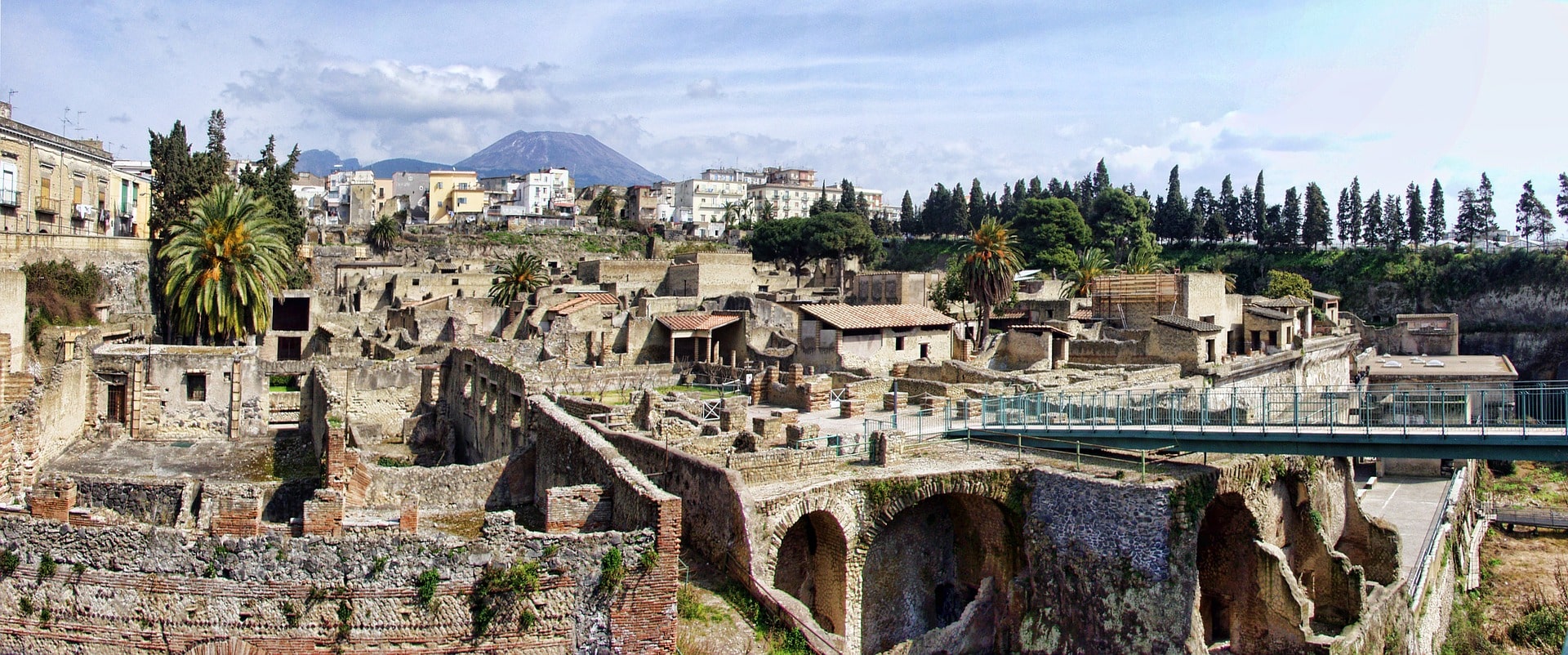If you have a story to share or a question that has not been answered on our website, please get in touch with us via contact details listed below or fill in the form on the right.
Herculaneum, a bit of history
The city of Herculaneum was accidentally found during the excavations for expanding a well in 1709. The excavations began only in 1764 then resumed in 1823 then stopped again in 1875, until they finally restarted in 1927. Even if Herculaneum had shared with Pompeii the same fate during the tragic volcanic eruption of 79 A.D., it shows several differences, starting from the much smaller size that makes a complete visit much more enjoyable. Its streets are narrower with normal height sidewalks, as the city was already provided with a sewer system unlike Pompeii, which was not equipped with it. Moreover the town had a city aqueduct that allowed rich people to have water directly in their houses. There is a good preservation of the houses in Herculaneum that are visibly more luxurious than Pompeii’s; the reason is to be attributed to the blanket of mud and to high pyroclastic materials from 10 to 25 meters high, which solidified until getting a rock floor called “Pappamonte” , a material quite similar to tuff. A residential location inhabited by the Roman aristocracy, differently from Pompeii, which was a working city. For the above reasons Herculaneum cannot be joined to Pompeii in the same tour ,deserving a separate visit, because it shows a completely different standard of life from Pompeii.
What to See in Herculaneum: the Monuments and Places of Interest
- Basilica of Santa Maria a Pugliano
- Church of Santa Maria della Consolazione
- Church of Santa Caterina
- Church of Santa Maria del Pilar
- Villas of the Golden Mile
- MAV Museum
- Vesuvius National Park

